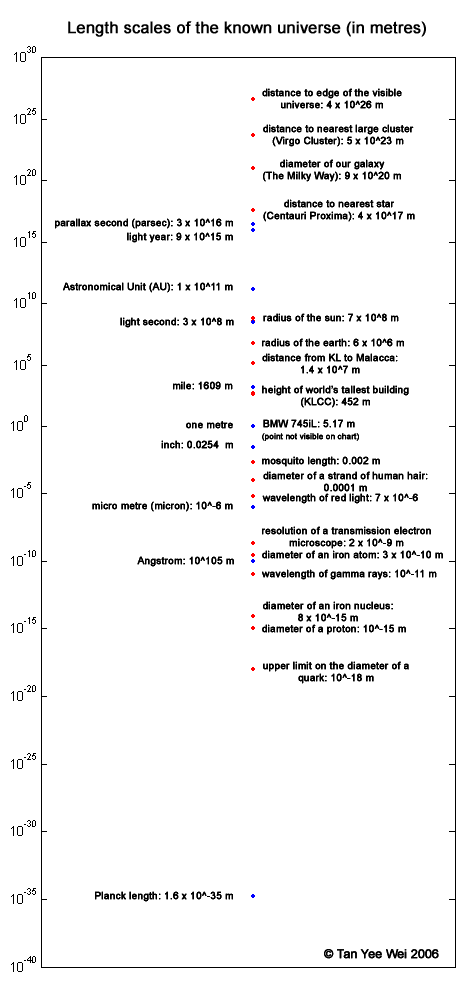The length scales of the known universe
I find it difficult to appreciate the context of sizes involved when I read that the diameter of a proton is 0.000000000000001 metres, or that the diameter of our galaxy is 900000000000000000000 metres.
To ease this little problem, I took representative lengths from various orders of magnitude, sorted them in order, and arranged them on a logarithmic scale axis.
The numbers are written in what some refer to as ‘scientific notation’, where trailing (or leading) zeroes are condensed to a little exponent. For example,

The blue points correspond to length units other than metres, such as the mile, angstrom and light year. Their text markers are located left of the blue points.
The red points corresponds to lengths of objects, some familiar in our lives, mostly not.
Physics
To ease this little problem, I took representative lengths from various orders of magnitude, sorted them in order, and arranged them on a logarithmic scale axis.
The numbers are written in what some refer to as ‘scientific notation’, where trailing (or leading) zeroes are condensed to a little exponent. For example,
0.0007 = 7 x 10^-4
3,750,000 = 3.75 x 10^6

The blue points correspond to length units other than metres, such as the mile, angstrom and light year. Their text markers are located left of the blue points.
The red points corresponds to lengths of objects, some familiar in our lives, mostly not.
Physics
Labels: natural science, physics

<< Home